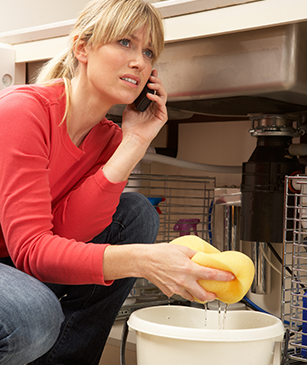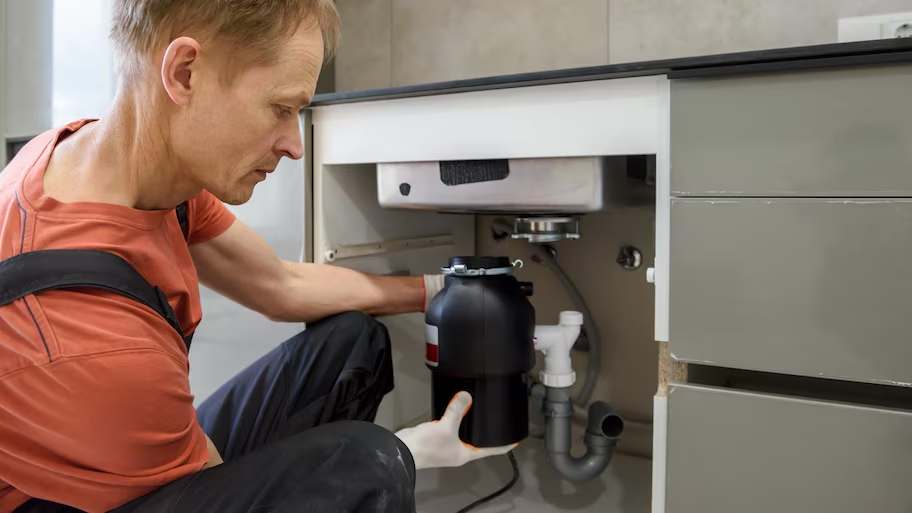Leading Tips for Fixing a Leaking Waste Disposal Unit
Leading Tips for Fixing a Leaking Waste Disposal Unit
Blog Article
The article in the next paragraphs pertaining to Why Is My Garbage Disposal Leaking From the Bottom? is quite entertaining. Read on and make your own assumptions.

Waste disposal unit are essential kitchen area devices that aid in disposing of food waste successfully. Nonetheless, a leaking garbage disposal can be an aggravating and untidy problem to deal with. Fortunately, many leakages can be fixed easily with a few easy steps. In this write-up, we will talk about how to take care of a leaking waste disposal unit successfully.
Intro
Garbage disposals are mounted under kitchen sinks and are created to shred food waste right into smaller pieces, permitting it to pass through the plumbing system easily. While these devices are typically reliable, leaks can take place over time due to deterioration, loose connections, or damage to the device.
Step-by-Step Overview to Fixing a Dripping Garbage Disposal
Turn Off the Power
Before attempting any kind of fixings, ensure that the power to the garbage disposal unit is turned off to stop the threat of electrical shock.
Find the Leakage
Determine the precise place of the leak and establish the reason
Tighten Links
Utilize a wrench to tighten any kind of loosened links between the disposal device and the plumbing system.
Change Seals or Gaskets
If the leak is due to worn seals or gaskets, remove the old elements and change them with new ones.
Patching Splits or Holes
For fractures or holes in the disposal system, usage epoxy or an appropriate patching product to seal the broken location.
Identifying the Source of the Leak
Before trying to deal with a leaking waste disposal unit, it is important to identify the resource of the leakage. This can commonly be done through visual evaluation or by carrying out straightforward tests.
Visual Inspection
Examine the garbage disposal system thoroughly for any signs of water leak. Pay attention to locations around seals, gaskets, and connection factors.
Testing for Leakages
One means to evaluate for leakages is by running water through the disposal system and checking for any noticeable signs of leak.
Common Causes of Leaks in Trash Disposals
Worn Seals and Gaskets
Seals and gaskets play a crucial role in avoiding water from dripping out of the garbage disposal. With time, these parts can degrade, resulting in leakages around the disposal system.
Loose Links
The links between the waste disposal unit and the plumbing system can come to be loosened gradually, creating water to leakage out during procedure.
Cracks or Holes in the Disposal Device
Physical damages to the waste disposal unit, such as cracks or openings in the real estate, can additionally result in leaks.
Devices and Products Needed for Fixing a Leaking Garbage Disposal
Before beginning the repair service procedure, collect the needed devices and materials, including a screwdriver, adjustable wrench, plumber's putty, replacement seals or gaskets, and epoxy or patching product for repairing splits or openings.
Testing the Garbage Disposal After Repair Work
As soon as the fixing is full, evaluate the waste disposal unit by running water via it to ensure that the leak has been settled.
Preventive Maintenance Tips to Avoid Future Leaks
To avoid future leakages, it is essential to do normal maintenance on your garbage disposal. This includes maintaining it tidy, avoiding putting non-food products or tough items down the disposal, and occasionally looking for leakages or other issues.
Conclusion
Finally, repairing a dripping garbage disposal is a fairly straightforward procedure that can be finished with standard devices and materials. By following the steps laid out in this short article and exercising precautionary maintenance, you can maintain your garbage disposal in good working problem and prevent pricey fixings in the future.
HERE’S HOW TO FIX YOUR GARBAGE DISPOSAL
WHAT TO DO IF SOMETHING IS STUCK IN YOUR GARBAGE DISPOSAL
If the impeller won’t turn, there’s probably something stuck in the disposal. It could be a steak bone or peach pit, although plumbers report pulling all sorts of inappropriate objects out of disposals, such as bottle caps or aluminum foil. Make sure power to the disposal is off, and look inside to see if you can see the source of the jam.
Never stick your fingers in a disposal. Pull out anything you see with tongs or pliers.
If the disposal still won’t work, it may be time to call a plumber or consider buying a new disposal. GEM Plumbing & Heating is here for all of your garbage disposal needs.
WHAT TO DO IF YOUR GARBAGE DISPOSAL DRAIN IS CLOGGED
Take everything out from underneath your sink and put a bucket or other container under your disposal to catch any water that drains out. Disconnect your disposal from the power supply. If it’s plugged into a wall outlet, unplug it. If it’s hardwired into an electrical box, go to the electrical panel and turn off the breaker for the disposal. Pour ¼ cup of baking soda into the drain, followed by ½ cup of white vinegar. Give the solution a few minutes to fizz and do its work. Look into the disposal with a flashlight to see if you can see an object that might be causing the clog. If you see it, remove it using tongs or pliers. MORE TIPS ON DEALING WITH A CLOGGED GARBAGE DISPOSAL
Never use drain cleaner in a garbage disposal. It can damage the plastic parts inside the disposal. You can also be splashed with the caustic liquid while working to clear the clog. Beware! Never stick your fingers into a garbage disposal. Trust us — not a good idea. In many instances, your dishwasher drains through your garbage disposal. This allows the disposal to grind any large food particles that may be drained out of your dishwasher. There are some jurisdictions, however, where the plumbing code prohibits such a connection. WHAT TO DO WHEN YOUR DISHWASHER DRAINS THROUGH THE DISPOSAL
Run some water in the sink so your plunger has at least a ½-inch of water to create a seal and plunge vigorously up and down several times. You may need to repeat this several times. Run hot water down the drain to clear any residue that remains.

We hope you enjoyed our piece about Why Is . Thanks so much for finding the time to read through our piece of content. Sharing is caring. One never knows, you will be helping someone out. Thank-you for taking the time to read it.
Click Here Report this page